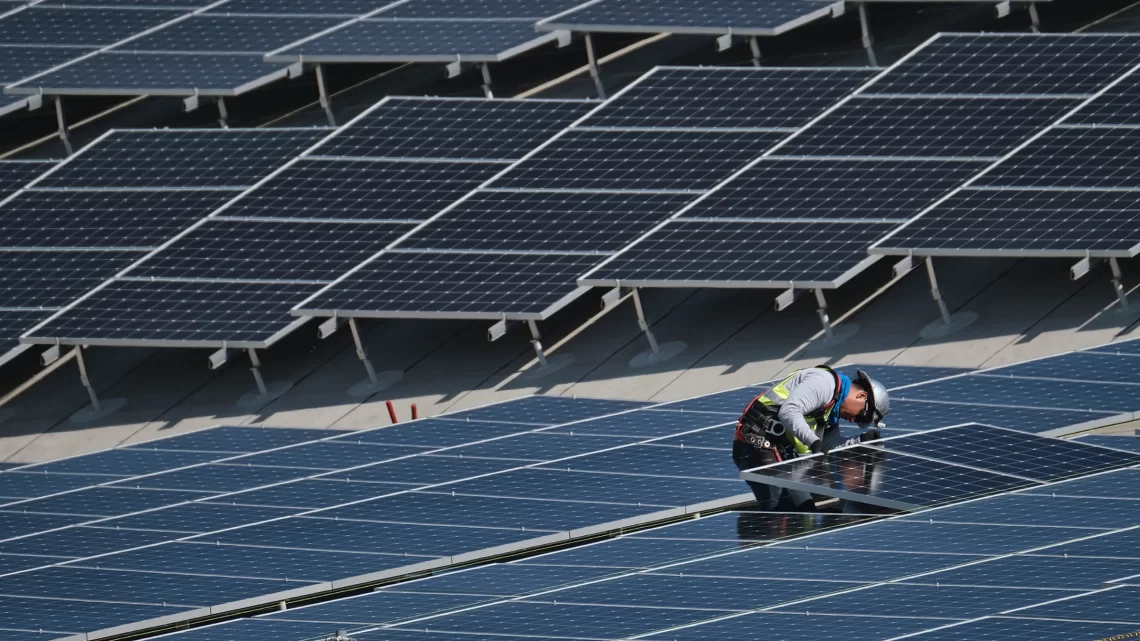
The Role of Tech in Climate Change Solutions
May 12, 2023Technological progress must occur on a massive scale for GHG emissions to drop at levels necessary to avoid climate changes that threaten global stability, and that calls for policies which encourage innovation across multiple sectors.
Companies can take steps to significantly decrease their climate footprint through small steps such as cutting data center energy consumption or turning off lights at night, among many others.
1. Energy efficiency
Energy efficiency is one of the easiest and cost-effective ways to cut carbon emissions and save money. Energy efficient technology utilizes techniques that eliminate or minimize energy waste; an example would be using less water and electricity with older washer-dryer models.
Increased energy efficiency in homes, businesses and schools can significantly lower greenhouse gas (GHG) emissions and electricity costs while simultaneously cutting GHGs by using efficient appliances and equipment, including LED lights. If widely adopted across these settings it would result in the elimination of up to 550 million metric tons of CO2 pollution annually – that would equal emissions from all of New York City, Texas, Florida and California combined!
Sustainable innovations also involve using underutilized materials as raw materials for new products and services, like Fairphone’s use of coffee beans to produce eco-friendly logs and pellets that burn more cleanly than traditional fossil fuels.
2. Renewable energy
Renewable energy comes from sources that naturally replenish themselves, such as wind and sunlight, making it an invaluable component of climate change solutions as it can reduce greenhouse gas emissions which contribute to global warming.
Renewable power can serve to supplement or even replace fossil fuel-fired power plants, producing lower greenhouse gas emissions over their operational lifetimes. Furthermore, renewables typically come online faster due to solar and wind projects taking less time for construction.
Renewable energy has become more affordable thanks to innovation and economies of scale, leading many businesses to embrace renewables as part of their commitment to sustainability. Not only does this support net zero goals worldwide, but diversifying power supply options improve resilience and energy security as well.
3. Water conservation
Water conservation is of utmost importance in light of global water shortages. Access to clean and safe drinking water is vitally important to people as well as other species, but climate change poses threats that threaten its availability.
Humans are finding increasingly creative ways to conserve and reuse water, including growing plants for drinking or cooking purposes, using solar-powered desalination technology, or raising lab-grown meat to reduce greenhouse gas emissions from cows.
Other climate change solutions focus on maintaining and improving water quality, such as by reducing agricultural pollution that deposits heavy metals, salts, and chemicals into rivers, lakes, oceans and other bodies of water, or installing better-draining pavements. Others attempt to capture carbon dioxide from the air with forests or other ecosystems but this alone cannot address climate change; rapid reductions of emissions must also occur concurrently.
4. Transportation
Solving climate change problems takes more than improved batteries, solar panels and renewable energy; it requires addressing inequities and bad habits which have allowed such dangerous situations to arise in the first place.
Technology can assist in this endeavor; wind and solar energy technologies have made significant strides toward decreasing costs, making it possible to switch away from fossil fuels sooner than expected.
Other innovations, like remote working (which was quickly adopted by businesses as they attempted to manage the effects of COVID-19 on their workforces) and smart transportation trends – charging infrastructure, battery innovation and digitizing shipping supply chains among them – enable massive carbon reduction. Such initiatives also reduce traffic congestion while making roads more sustainable; their environmental, social, and economic benefits can be tremendous.
5. Waste management
Human activity has played a large role in raising global temperatures by emitting greenhouse gases that trap radiation that would otherwise escape into space, so reducing concentration is essential to combatting climate change solutions.
Though many clean energy technologies are already operational, reducing GHG emissions requires more than just installing better batteries or solar panels; it requires also addressing inequities and bad habits which have contributed to creating this issue in the first place.
Waste-to-energy conversion, for instance, is an innovative technology that uses renewable energies like anaerobic digestion or plasma gasification to convert non-recyclable waste into heat, electricity and fuel for use by companies and institutions – such as anaerobic digestion or plasma gasification – for heating purposes, electricity production or fuel replacement purposes – not only providing cost savings while helping lower GHGs emissions; such technologies may even replace fossil fuels altogether for a greener future.




